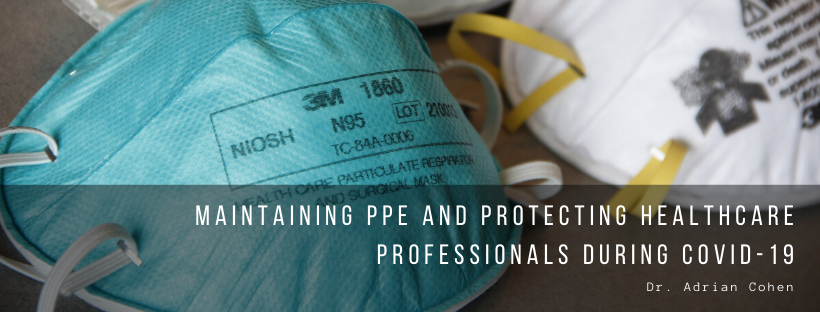The world has changed drastically over the last few months due to the spread of the highly contagious COVID-19. Many countries around the world have shut down or placed stay-at-home orders in order to flatten the curve and ultimately stop the spread of the virus. While these are good tactics, many individuals are still required to go to work due to being essential workers. At the top of this list are healthcare professionals, those who are on the front line trying to treat patients who have come down with the virus. Due to constantly being around those who have fallen ill, healthcare workers all around the world have become extremely susceptible to not only contracting the virus themselves but also bringing it home with them. One of the main lines of defence for this is by wearing personal protective equipment (PPE). The problem is that equipment that would usually be worn once and thrown away, such as N95 respirators, are now being used repeatedly in order to try and make PPE last as long as possible. Healthcare workers are now putting on as much PPE as they have available to them as well as using them well past their expiration in order to conserve resources. Maintaining a limited supply of this equipment is imperative in protecting our healthcare workers as we continue to battle this virus, but how can we do that?
Separation by Space
One way to slow down our use of PPE is by keeping patients and healthcare workers in one physical space within the hospital. When patients are geographically dispersed, doctors will have to move around the hospital in order to check on each of them which can potentially spread the virus via asymptomatic workers. On top of this, PPE would have to equip PPE at the entrance of each individual patient’s room. By keeping staff assigned to a single area, they can equip the PPE at the beginning of their shift, and keep it on until the end of the shift as opposed to putting it on and taking it off continuously. This was the standard policy in Chinese hospitals when the outbreak first began and has been used in many hospitals around the world since. By only putting the equipment on once at the beginning of the shift, you not only reduce the burn rate of PPE but also the chances of healthcare workers contaminating themselves.
Physical Barriers
Another great way to slow down PPE use is by creating physical barriers such as anterooms outside of any COVID wards located in your hospital. The idea is that the COVID ward will be the most contaminated area while each anteroom becomes progressively less contaminated. This allows healthcare workers to remove PPE layer by layer as they go through each anteroom, with each room being dedicated to removing specific pieces of equipment. This allows a simple method in removing equipment and helps healthcare professionals know what pieces of equipment to take off and in what order to do so in order to protect themselves and not further contaminate the equipment themselves. Even if anterooms aren’t set up, a screen can help block off decontamination zones as individuals leave COVID wards.
Time
A great way to try and make up for the extended use and reuse of PPE is by organizing shift schedules to last a maximum of six hours. The best route would be to make them only last four hours, but that isn’t always easy to do. The problem is that wearing N95 respirators for any longer than six hours will likely make it very difficult for healthcare professionals to keep wearing them. If shifts can’t be shortened, have mandatory hour-long breaks instead. By limiting shift length, N95 masks can be reused more often. Many hospitals require healthcare workers to store their respirators in bags with their names on them so they can be used each day for up to a week, while others are using decontamination technologies such as ultraviolet radiation in order to extent that reuse period even further. Shortening shift lengths will allow for longer turnaround time for masks to be disinfected and redistributed, ultimately helping them last longer. Viral particles on surfaces also decrease over time, which only adds to the idea of letting more time elapse between each use of protective equipment.

